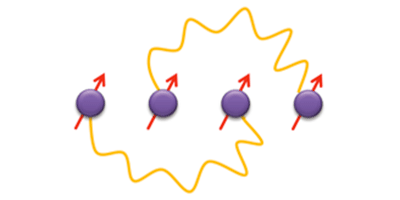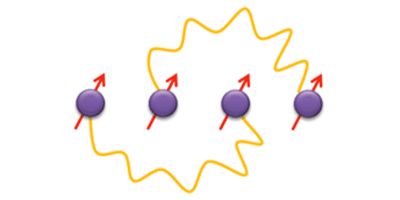Quantum Fluctuations Affect a Row of Distant Ions
The quantum vacuum teems with particles flitting in and out of existence, with small but measurable effects on matter. A team led by Dan Oron and Roee Ozeri at the Weizmann Institute of Science in Rehovot, Israel, now shows that virtual photons produce a tiny collective energy change in a row of trapped ions even when the ions are micrometers apart.
The influence of virtual photons in the quantum vacuum was first seen in frequency shifts in the fine structure of the hydrogen spectrum. The discovery of this “Lamb shift”—named for the Nobel-prize-winning experimenter Willis Lamb who first measured it—inspired a new description of the electromagnetic field’s interaction with matter: quantum electrodynamics (another Nobel-prize-winning effort.)
More recently, physicists have used atom-trapping technology to show how the vacuum’s effects grow when many identical emitters interact. For example, in “superradiance,” the total emission increases because virtual photons emitted by one atom stimulate emission by the others. The corresponding “collective Lamb shift” of the energy levels has previously been measured for emitters that are closer than the light wavelength, so their dipole moments interact directly. The Weizmann researchers measured the effect for as many as eight separate strontium ions in a linear trap that were far apart (several micrometers)—a separation at which the ions’ interaction has to be described as an exchange of photons. The measurement had to be very precise to detect the shift, which was only about one th of the emission linewidth. This observed influence of vacuum fluctuations on trapped-ion systems will be of interest for precision optical measurements and for manipulating quantum information.
This research is published in Physical Review Letters.
–Don Monroe





